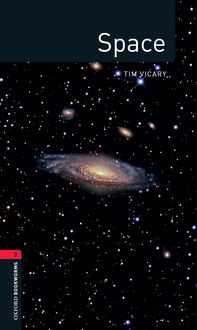Space
Ova knjiga je trenutno nedostupna
94 štampane stranice
- Godina izdavanja
- 2012
Utisci
- rfmusaadje podelio/la utisakпре 7 година💡Poučna
- b3496092946je podelio/la utisakпре 4 године👍Vredna čitanja
- b5118170620je podelio/la utisakпре 4 године👍Vredna čitanja
Citati
- Beyzanur ÇAMje citiraoпре 4 године‘That’s one small step for a man,’
- Lisset Montalbánje citiraoпре 4 годинеThe icy surface of Europa
Scientists are very excited about this. One day, they hope to send a space probe to Europa. When the probe lands, it will use radar to look for water under the ice. ‘We have already done this sort of thing on the Earth,’ says astronomer Chris Chyba. ‘There’s a lake in Antarctica that’s under 4 kilometres of ice. It’s called Lake Vostok – and it was discovered with radar. So that’s what we could do on Europa, and I think we probably will.’
If they find the ocean, they will send a submarine down into it. And that will be very exciting indeed. When the submarine turns on its lights, what will it see? Huge fish, with no eyes and enormous teeth? Nobody knows. But scientists want to find out.
Another moon which may have life is Titan. Titan is Saturn’s biggest moon; it is bigger than the planet Mercury. In fact, Titan probably was a planet once, before it came too near Saturn. It is different from all Saturn’s other moons, because it goes around - Lisset Montalbánje citiraoпре 4 годинеInside a very large star the temperature gets hotter and hotter. Hydrogen turns to helium, and then into other things – carbon, oxygen, and iron. But then, one day, the star becomes too hot, and there is not enough hydrogen left. Then, very suddenly, the star collapses. As it collapses, it gets even hotter still, and then it explodes. In the explosion, the temperature may reach 100 billion °C.
This exploding star is called a supernova. One day in the next million years, Betelgeuse, that big red star in Orion, will explode like this. In fact, it is possible that it exploded a hundred years ago, and is already a supernova. But the light from the explosion has not reached us yet, so we cannot see it.
When the light from a really big supernova does reach the Earth, it is really exciting. Sometimes people can see the supernova in daylight. People in Japan and China saw a supernova like this in 1024 AD, and people in England saw one in 1604 AD.
fb2epub
Prevucite i otpustite datoteke
(ne više od 5 odjednom)


